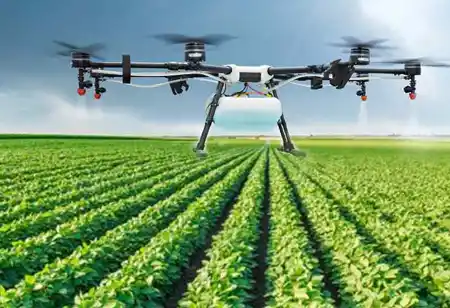Thank you for Subscribing to Agri Business Review Weekly Brief
How Computer Science Paves the Way for Sustainable Agriculture
Human activities have transformed nearly half of the Earth's land surface to cultivate just eight staple crops - maise (corn), soy, wheat, rice, cassava, sorghum, sweet potato, and potato.

By
Agri Business Review | Friday, September 15, 2023
Stay ahead of the industry with exclusive feature stories on the top companies, expert insights and the latest news delivered straight to your inbox. Subscribe today.
Agricultural transformation towards staple crops raises sustainability concerns. Computer science principles, like abstraction and state space, offer innovative ways to diversify agriculture and enhance sustainability
FREMONT, CA: Human activities have transformed nearly half of the Earth's land surface to cultivate just eight staple crops - maise (corn), soy, wheat, rice, cassava, sorghum, sweet potato, and potato. These crops form the backbone of global caloric intake, and as the world's population continues to surge, the pressure to expand agricultural production looms ever larger. However, a growing chorus of experts contends that further expansion of modern industrialised agriculture, reliant on synthetic fertilisers, chemical pesticides, and high-yield seeds, isn't the sustainable path forward.
This contentious issue prompts the question–How can societies develop a food system that caters to their needs while prioritising health and diversity? Traditional alternative methods, like organic farming, have struggled to scale up to the vast scope of industrial agriculture.
In a recent study, computer scientists, crop scientists, and their collaborators proposed an innovative approach that draws inspiration from computer science–abstraction. This concept, rooted in summarising data and concepts computationally, provides a framework to analyse and act upon complex agricultural systems without being bogged down by minute internal details.
The transformation of agriculture into its modern, intensified form occurred rapidly in the mid-20th century, driven by technological advancements such as synthetic fertilisers and statistical methods that revolutionised plant breeding. These breakthroughs advanced food production but came at the cost of environmental degradation, contributing to climate change, nutrient runoff in water bodies, and the loss of biodiversity through the conversion of natural landscapes into monoculture fields.
Many farmers and researchers aspire to diversify crops and embrace sustainable practices. However, discerning viable alternatives, particularly amidst a changing climate, is an intricate endeavour demanding profound local knowledge and expertise spanning fields like plant science, meteorology, and geology.
The notion of a state space from computer science offers a compelling analogy. Agricultural systems represent dynamic states within a specific ecosystem, akin to pieces on a chessboard. Farmers seek better states while nature induces minor and dramatic transitions. Just as chess players strategise to advance their position, farmers strive to optimise their land use.
Unlike individual farmers, who lack the resources for extensive trial and error, computing systems can leverage vast agricultural knowledge to simulate a chess game with nature. This process empowers farmers to explore diverse options beyond the limitations of conventional agriculture, encouraging novel strategies like mixed-crop cultivation and tailored land management techniques.
For instance, a scientist seeking to assess five four-year crop rotations involving seven plant species faces 721 potential combinations. The proposed framework can tap into ecological research to identify the most promising systems for testing.
One promising avenue lies in intercropping, where diverse plants grow together synergistically. Indigenous communities, such as those behind the three sisters' combination of maise, squash, and beans, have long practised this approach. When done right, intercropping fosters mutual benefits among plants, exemplifying nature's elegant balance.
Throughout history, various cultures have developed their own intercropping systems with similar positive interactions, such as turmeric and mango or millet, cowpea, and ziziphus, commonly known as red date. Modern innovations, like agri Voltaics, combine solar panels with farming, offering shade to crops while generating renewable energy income for farmers.
The pursuit of a sustainable, diverse, and healthy food system requires a departure from the confines of conventional agriculture. By adopting the principles of abstraction and a state space perspective, we can empower farmers with a rich palette of choices and encourage innovative, ecologically sound approaches to feed the growing global population.





